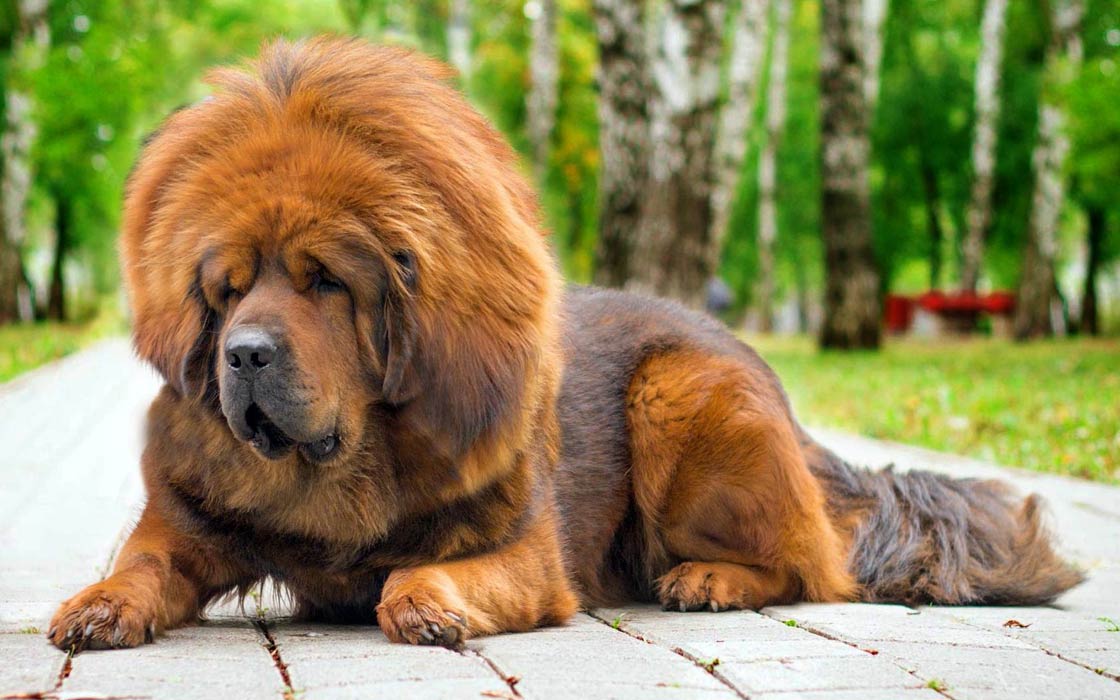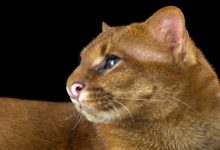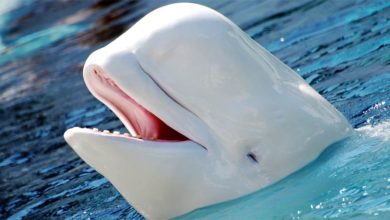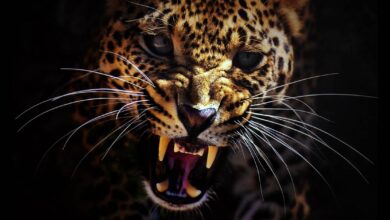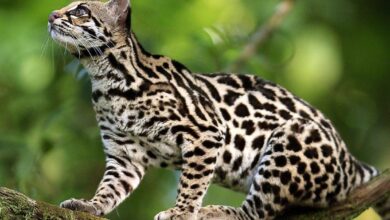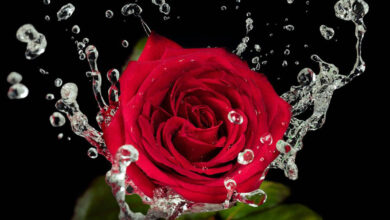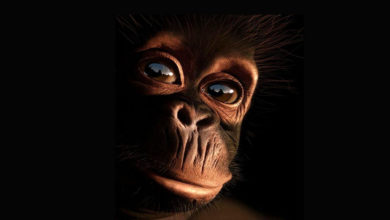Tibetan Mastiff / Do-khyi
It is able to take the fight to an enemy the size of a leopard if the herd it guards is threatened. It can also become a great friend and protector of its owner, provided that it goes to a wise and consistent man. The Tibetan Mastiff, like other defensive and guard breeds, is a strong and intelligent dog, but also a bit wild and difficult to train. At the same time, it is the most expensive dog in the world.
FCI-classification
- Group 2 Pinscher and Schnauzer- Molossoid breeds – Swiss Mountain and Cattle Dogs.
- Section 2.2 Molossoid breeds, Mountain type
- Without working trial
Name
In the case of the Tibetan Mastiff, other names are also used: Tibetan Dog, Do-khyi, Bhote Kukur, Zàng áo, Bankhar.
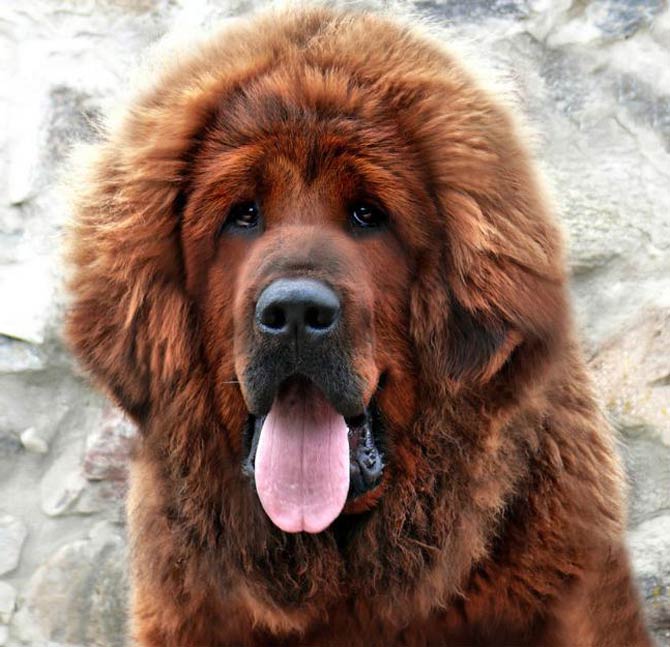
History of the breed
The origin of this one of the oldest breeds has not been well understood, but it is therefore fascinating and unique, as both Aristotle and Marco Polo wrote about. For this reason, many theories have arisen to explain their uniqueness. One of them was that the Tibetan mastiff was the ancestor of all molossian breeds, but most modern experts question this hypothesis.
Unreliable genetic analyzes carried out by the Nanjing Agricultural University’s Laboratory of Animal Reproductive Genetics and Molecular Evolution in Nanjing suggest that, compared to most modern breeds that split off from the wolf about 42,000 years ago, Tibetan mastiff became a separate breed approx. 58,000 years ago.
The mastiffs’ tasks were to guard the herds grazing in the Himalayas and guarding the Tibetan monasteries.
George IV of Hanover – King of Great Britain and Hanover, reigning in the 19th century, owned two mastiffs, and in 1906 they became so popular that they were presented at the Crystal Palace. After the outbreak of the war, the English ceased to admire them, which almost led to the extinction of the breed in the Islands.
After 1980, mastiffs began to be remembered around the world, and although the breed is still considered rare, the AKC and FCI registered it, creating a pattern for it.
After 1980, the world began to recall the mastiffs and, and although the breed is still considered rare, the AKC and FCI registered it, creating a standard of it as well.

Characteristic
Appearance
Some breeders distinguish between two types of Tibetan mastiff: Do-khyi and Tsang-khyi (in Tibetan it means “Tsang dog”). The second variety is also called the “monastic type”, described as taller, heavier and with more mouth folds compared to the Do-khyi “nomadic type”. Despite the differences, representatives of both types may appear in one litter, with the fact that heavier puppies are born in fewer numbers.
Dogs bred in the West weigh between 60 and 90 kg (133 – 198 lb), but the upper end of this range is classified as overweight. The huge size of the dog prevents it from fulfilling the role it was originally given, therefore in China too large dogs of this breed are not very “useful”. It is usually very resistant to low temperatures – otherwise, it would not have survived too long in Tibet and at the high altitudes for which the Himalayas are famous (northern Nepal, India, Bhutan). Instinctive behavior and the ability to create canine herds significantly contributed to the breed’s survival in difficult conditions.
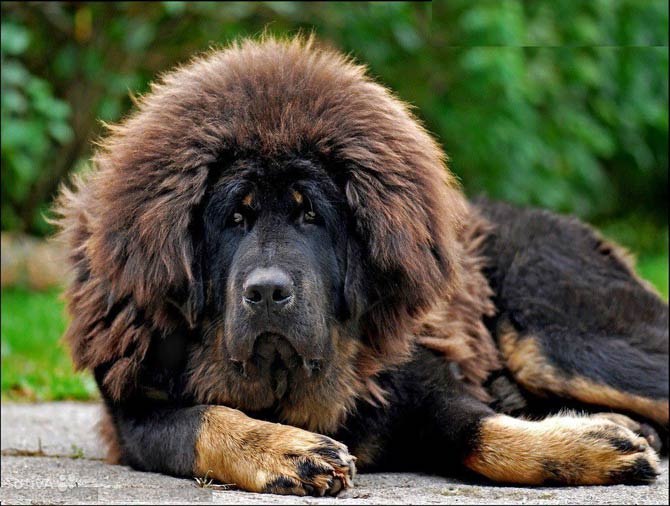
Coat
The two-layer fur is long, adaptable to the climate and comes in a variety of colors: black with or without tan, blue, red (from pale gold to deep red), swarthy. White accents are often visible, especially the star on the chest. Dense, hard coat – the top layer is neither too long nor thick, but rough, spiky and straight. The undercoat is dense and woolly, and is thinner in the warmer months. More glamorous in dogs than in females; the ruff formed by hair on the neck and shoulder blades is also specific.
The coat does not give off the specific, unpleasant smell that occurs in many large breeds – regardless of the length and color, it can shed dirt and is resistant to the absorption of unpleasant aromas. Although fur is shed in small amounts throughout the year, heavy shedding generally occurs in late winter or early spring, sometimes in late summer and early fall; coat thickness, coat structure and molting periods are strongly influenced by sterilization.
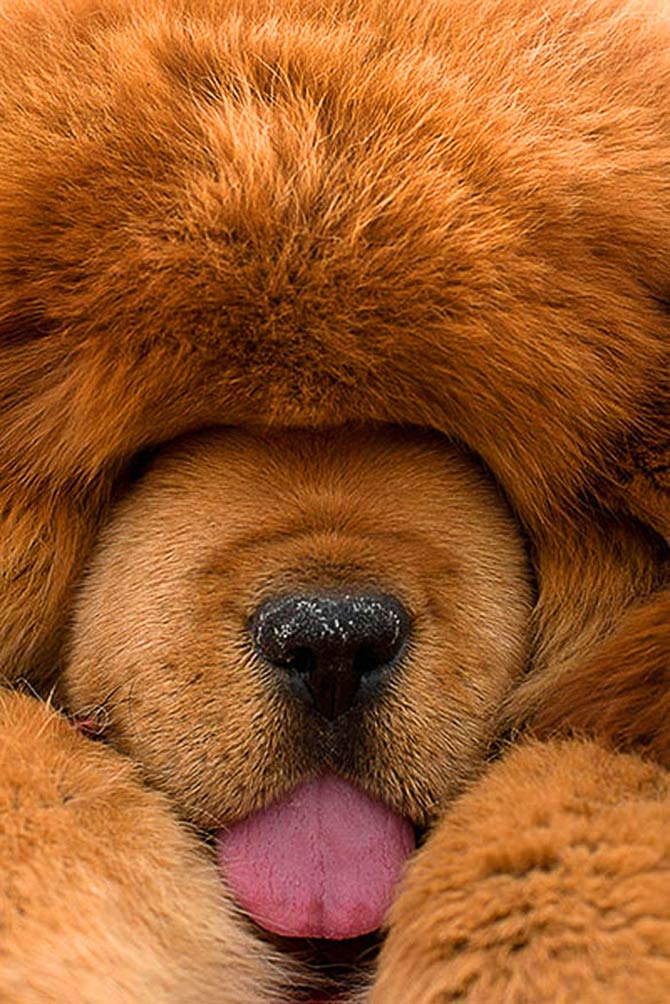
Silhouette
The dog’s head is broad, strong and heavy, with a skin fold between the eye and mouth. Eyes not very large, iris in various shades of brown (depending on the color of the coat); eyes wide apart, oval and slightly slanting, one can see in them peace and dignity. Triangular ears, medium-sized, soft, set between the skull edge and the eye, pointing forward. The silhouette is strong, muscular, ends with a tail of medium length, set high, slightly curled, forming a straight line with a back; when the dog is agitated, carries it high.
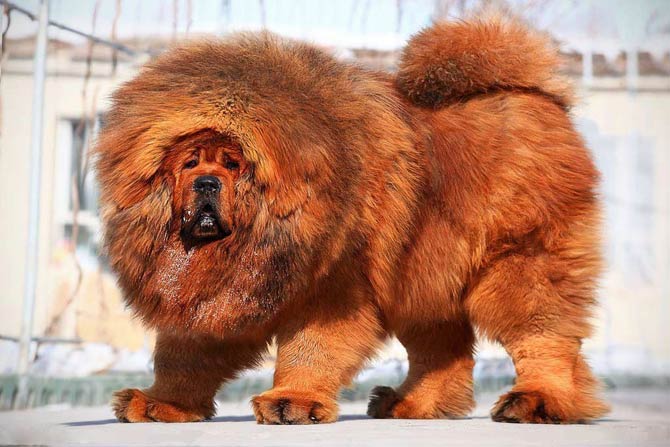
Temperament
In Tibet and the West, as a protection dog for livestock, it is able to confront a predator the size of a wolf or a leopard, but usually behaves as a typical herding dog, which responds to an intruder by barking to scare it away and avoid fighting. Socialized mastiffs feel best at home with a large garden and another dog, so they are not suitable for people living in a block of flats. The individuals bred in the West seem more sympathetic than their Tibetan counterparts, but they also show a considerable distance from strangers visiting the owner’s house.
Over hundreds of years of selective breeding, a great protector of families has been created, which is why Tibetan Mastiff is a great night watchman to keep potential attackers at bay by barking at sounds. Therefore, leaving your dog in the yard overnight is not recommended. To be a more active, alert and lucid guard at night, the Mastiff often sleeps during the day.
Like all defensive breeds, it is intelligent, but also stubborn, so it is advisable to undergo obedience training, moreover, the Tibetan Mastiff is a dog with a dominant character. This combination of traits requires a strong personality from the potential owner, to which the dog will bow a bit. Lack of consistency, consistency, and clarity in training can lead to a dog being raised to be a potentially dangerous and erratic animal (although this is true for virtually all breeds).
The guardianship of the mastiffs requires supervision by the owner to avoid unforeseen incidents during which the dog will behave like a typical protector and guard. Generally speaking, the breed is not recommended for novice dog lovers.
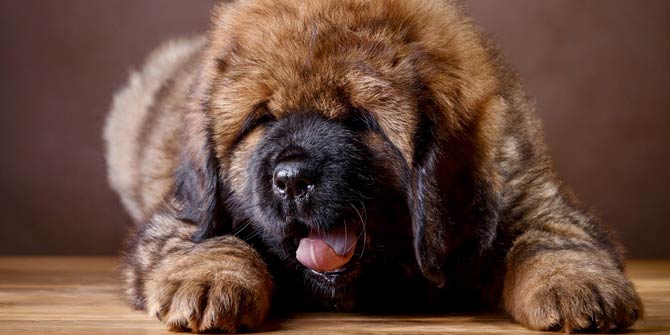
Health condition
Unlike most large breeds, the average life span of mastiffs is long – in the range of 10-16 years; however, it depends on the breeding line – Inbred dogs have shorter lives and are more likely to get sick.
There are fewer genetic diseases within this breed than in other breeds. However, if the dog suffers, most often from hypothyroidism, skin problems may also appear (including allergies, autoimmune diseases, demodicosis), malocclusions are visible: undershot teeth, crowding of teeth. Serious diseases include heart defects, seizures, epilepsy, progressive retinal atrophy, cataracts, ear canal infections, and joint dysplasia (common in large dogs).
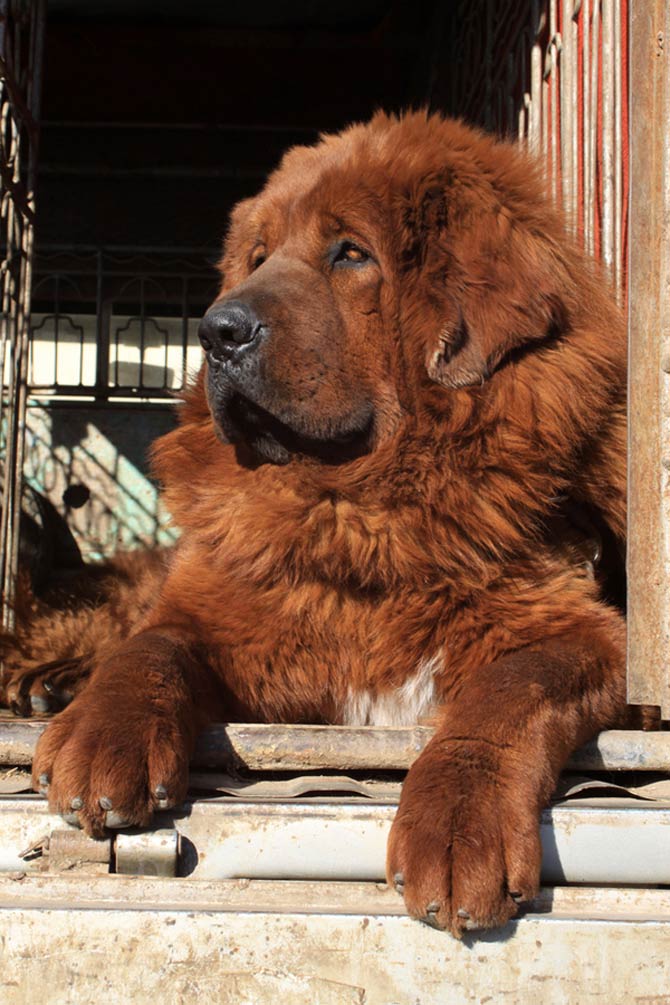
The most expensive dog in the world. $ 2 million for a dog?
The breed is considered rare, so many people are willing to pay a lot for a Mastiff. A Chinese woman spent 4 million yuan on an 18-month-old purebred male, naming him Yangtze 2. In March 2001, a coal baron from China purchased a Tibetan red Mastiff for 10 million yuan. The latest reports suggest that $ 2 million was paid for the Tibetan Mastiff.
There are more reports of exorbitant amounts for which people are able to buy a dog of this breed, but it seems that most of this is just a marketing ploy by breeders to drive up the price of purebred dogs. Money-hungry breeders present retouched photos of mastiffs on their websites, saturating the color of the coat, increasing the size and muscle tone of the dogs sold. The “refinement” of photos is so advanced that people who buy a dog often feel cheated. A little more about this in the article – The most expensive animals in the world.
So do not fall for it and do not pay more than… $1 million for such a dog, because two million it is certainly not worth 😉
Oh, and one more thing – the Tibetan Mastiff, contrary to the assurances of some breeders, has nothing to do with a lion 🙂 Some breeders claim that it has common ancestors 😉
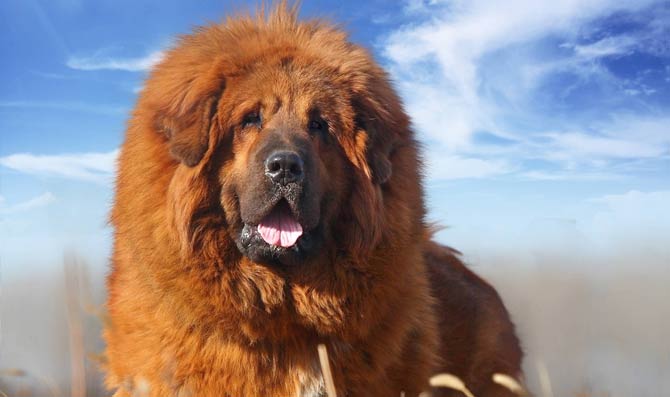
Detailed data / dimensions (size)
Tibetan Mastiff
- Height at the withers:
- males: approx. 66 – 76 cm (26 – 30 in)
- females: approx. 61 – 70 cm (24 – 27.5 in)
- Weight: 60 – 90 kg (133 – 198 lb)
- Lifespan: 10 – 14 (16) years

Tibetan Mastiff – interesting facts
- The Tibetan mastiff is referred to as Do-khyi (“guardian of the gate” / “dog that can be tied” / dog that can guard”), reflecting the original activities it was involved in: guarding herds, tents, villages, monasteries and palaces. In Nepal, it is known as Bhote Kukur (Bhut means someone from Tibet in Nepal).
- In 2008, the breed participated in the Westminster Kennel Club Dog Show for the first time.
- The Tibetan Mastiff is one of the few dog breeds that oestrus occurs once a year – a trait that is common in wild canines such as the wolf. In dogs that live in lower altitudes and in warmer climates, oestrus occurs twice a year.
- To this day, the Tibetan peoples of the mountainous regions appreciate the defensive skills of the mastiffs used to guard herds of sheep and yaks.
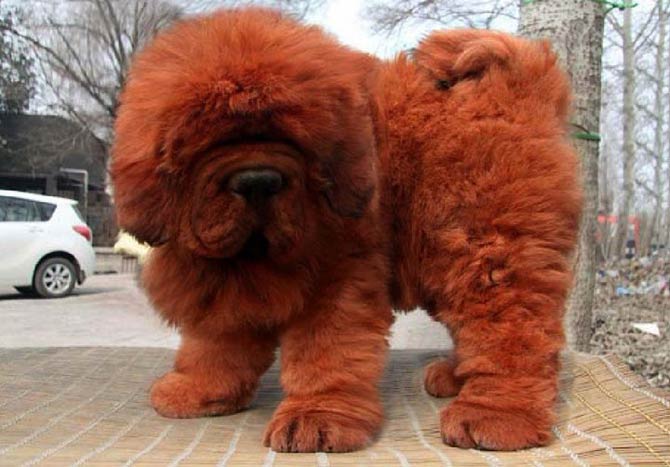
Recommended
- The smartest dogs
- The tallest dogs
- The most aggressive dogs
- The oldest dogs
- Pets
- Dogs
- Cats
- Wild cats
- The fastest animals
- The fastest birds
- The largest eagles

